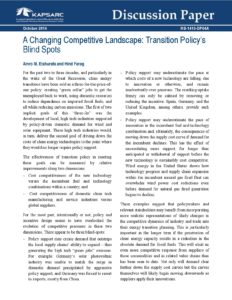Dr. Elshurafa is the Executive Director of the Utilities and Renewables Department and possesses 20+ years of experience garnered on three continents. His research interests lie in renewable energy policy, electricity market design and regulation, and power systems modeling. He has led and executed several national modeling initiatives at distributed and utility scales. Some aspects of his research have been adopted by BP in their seminal annual Statistical Review. He is listed among the top 2% scientists globally as per Stanford, and he is a board member of the Saudi Water and Electricity Regulatory Authority. Credited with 50+ papers and patents, he holds a Ph.D. in Engineering and an MBA in Finance.

Revitalizing Relationships for the Clean Energy Souk
The GCC countries have been trading for millennia, and energy transition offers new opportunities to revitalize existing trade relationships and form new partnerships driving growth through innovation. Read More Here
18th April 2024






































